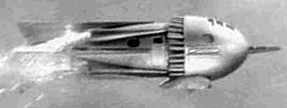

Dedicated to the Promotion and Preservation of American Muscle Cars, Dealer built Supercars and COPO cars. |
|
|
|
#1
|
|||
|
|||
|
Great Article and a great job on the car.........Congrat's Steve............
Ken
__________________
 The Best things in life......Aren't Things |
|
#2
|
||||
|
||||
|
Thanks! I've been trying to put some miles on the car before winter. Started the whole project when the car had 114,163 on it. Put about 80 miles on her today and finally got the odometer to 115,000, so thats about 850 miles on the car since finished. Another 150 or so before the magic 1,000 mile mark. Plugs are still burning perfectly clean.
The one thing I've learned about Pontiacs is that they are very cold-natured when it comes to needing a warm up. You really have to let this car warm up to operating temperature before driving it. Once that choke pull off engages, she's good to go, but very cranky if you try to drive her before she's ready. I've also finally run out of little noises and bugs to get rid of, from the squeeking front shock bushings, to the tach reading wrong, to the lean secondary rods and bad accellerator pump, to the steering column/clutch rod ringing, to the bad o-ring in the proportioning valve. I guess it never really ends. [img]<<GRAEMLIN_URL>>/beers.gif[/img] |
|
#3
|
||||
|
||||
|
BTW, I did actually notice that the TCS system works. I was sitting in the driveway after returning from the Sunday drive and was just shifting through the four gears and reverse, with the clutch engaged. When I put the shifter into fourth, the rpms dropped by several hundred. Pulled it out of fourth and the rpms rose back to the idle position. Very interesting. I guess in fourth, they didn't want any vacuum advance, so once it hits fourth gear the vacuum signal gets interrupted by the TCS solenoid.
|
|
#4
|
||||
|
||||
|
Spoke with Dave from the Performance Years website (necb3) who has the 72 4-speed T/A that parked with me at the MusclePalooza show back in September. He mentioned that my TCS emissions system seems to be running backwards. I checked the manual and he was right.
This was from page 6D-9 of the 1972 repair manual: "TCS solenoid energized, providing no vacuum advance in all transmission ranges but high gear during normal operating temperature (between 85 degrees and 220 degrees)." "TCS solenoid de-energized, allowing for full vaccuum advance in high gear during normal operating temperature and all modes of transmission operation. (below 85 degrees and above 220 degrees)." So I checked the wiring and it turns out I had the two-prong wiring clip hooked up the wrong way, of the two possible ways to connect it to the TCS solenoid. So I flipped the wiring terminal over and reconnected it. The good news is that the TCS then worked properly as designed. The bad news is that the engine ran like crap with no vacuum advance within the above factory parameters. Couldn't even get the car out of the garage for a test drive. What the heck were they thinking back then? I guess it was their drastic attempts at making these monsters somehow emissions friendly. Gotta love the early 1970s - the engineers figured if they could make the tailpipe emissions somehow cleaner, then all was wonderful in the world. They didn't care that the cars barely ran, they just had to make the EPA happy and the customer be damned. Anyway, I rerouted the vacuum line from the carb T directly to the distributor and then reset the timing as per another 455HO guys' recommendations (Lloyd: 12 degrees initial with the vacuum disconnected and plugged). The car definitely picked up some power and wasn't falling so flat in the upper mid-range anymore. Currently waiting on some new jets and primary rods to arrive. |
|
#5
|
|||
|
|||
|
So the carb may have been setup properly before?
Jason |
|
#6
|
||||
|
||||
|
No, the 72 HO carbs were jetted extremely lean from the factory, too lean in fact to get any real power, it seems. I just happened to actually hook up the wiring wrong on the TCS solenoid, which ended up producing more power than stock to begin with by giving vacuum advance in 1st, 2nd, and 3rd gears. Sort of like going directly to step 3 and skipping steps 1 and 2 of disconnecting the TCS and rerouting the vacuum advance hoses, when looking to improve performance.
The richer secondary rods helped the WOT performance. The guys over at the Pontiac site who are very familiar with the low compressions 71 and 72 HO engines are passing along most of their little secrets. I have a couple pairs of jets and primary rods on their way, for me to experiment with. Each little tuning trick seems to be helping the performance measurably. By next spring it should be running a bit strong(er). [img]<<GRAEMLIN_URL>>/burnout.gif[/img] |
|
#7
|
||||
|
||||
|
It's been an eventful couple of days here! Nothing seems to be easy lately. DAMN GREMLINS!
After I did the jet and rod swap, I reinstalled the carb and took it for a ride: it felt good but started popping at 4,000 rpm. Thought it was a jetting issue until I got home and sat there idling and it then idled down to zero and wouldn't restart, just cranked with no spark. Typical! So I swapped in a brand new extra set of Accel points since the ones in the distributor looked fried...again. (Unfortunately, I had previously reinstalled that damn Pertronix coil which I had swapped back in after noticing the original Delco coil was leaking oil last week. I am beginning to think that that Pertronix coil is supposed to have its own ballast resister, even though the box said it didn't need one.) Anyway, I couldn't get the damn thing to spark! So last night I bought a new coil at the local Napa store, still no spark. So then came the ignition parts replacement with known good parts to try to work through what went bad. Points, condensors, rotor, cap. Even tried a new primary lead wire from the neg coil terminal to the points since I have seen those break internally, before. Turns out the brand new Accel points that I had swapped in, were defective. They were brand new in the box, but for some reason wouldn't work - looked like the rubbing block was too short. Swapped in another condensor, still no spark. Finally, I filed down an old set of used points, installed them and it miraculously fired up. Oh, that was after I installed the rotor backwards (yes, it is possible) and almost blew the roof off of the garage. (Lucky, the car has a shaker hole in the hood, otherwise it would have one now!) All in all, a very long day, yesterday. Bought a new set of Napa points this morning and replaced the old set. Started up fine once the dwell was set. So, the end result is that I put in the #74 jets and the #44 metering rods which were almost an exact 10% jet/rod size increase in richness, along with the red power piston spring, all from Lloyd-TX, a 455HO fanatic on the Performance Years website. This replaced the factory 71 jets and 43 rods. BE secondary metering rods, replacing the leaner stock CR rods. Accelerator pump and spring from Cliff Ruggles. Timing set at 8 degrees initial at the moment. Running with the vacuum advance routed directly to the manifold vacuum nipple off the back of the carb, separate from the TCS system. Whoa Nelly! That really woke this thing up. She definitely screams now. No more fading, pulsing or flat spots in the mid and top range. She just keeps pulling. I chickened out at around 5,000 rpm, since I was running out of highway rapidly - but she was still pulling. I would estimate it was a good 30 horsepower difference between the stock super lean setup and Lloyd's recipe. Very seemless transition to the secondaries. The car's nose just rises up off the ground immediately. Oh, and the spark plugs actually have a little color on them now, from the super lean, bright white, porcelain, before. By the way did I mention that this car gets really bad gas mileage? or is it my driving technique? I went through half a tank and only went 35 miles. |
|
#8
|
||||
|
||||
|
Any electrical gurus out there?
OK, so I figured out the reason I keep burning up the ignition points. I just don't know how to remedy the problem. Just out of curiosity I decided to check the voltage at the positive terminal of the coil (the black/pink resistor ignition wire and the yellow starter solenoid wire that are crimped together) when cranking versus when running. It is completely opposite of what it is supposed to be: When cranking it shows 9.2 - 9.6 volts. Which I imagine is a full 12 volts but reduced by the amount of juice it takes to run the starter motor. When running it shows around 12.2-12.4 volts. This is the opposite of what it is supposed to be doing! It should be 12 volts during crank and 9 volts when running. So those full time 12 volts are frying the points. I just swapped out the ignition switch under the column thinking maybe it was defective but no change. I checked the starter solenoid and it is wired properly with the purple, and yellow wires in their proper position. Anyone have an idea on this? Is the resistor wire not resisting? The engine wiring harness was supposed to be the one for the points ignition. (AmericanAutowire part# FB20530) I am wondering if they built me the wrong harness, and gave me the unitized harness instead. I don't know if this is a blessing in disguise since I am going to upgrade to the M&H breakerless setup this weekend and their site says it will operate on the between 6 to 18 volts. I know that you need a full 12 volts running when you put an HEI distributor in, just wondering if the unitized harness has the same 12 volt running voltage. |
|
#9
|
||||
|
||||
|
It sounds to me like you may have the wrong harness. If the car were mine, I would take this route.
http://www.lectriclimited.com/mainpage.htm The NCRS really seem to like this. Happy Thanksgiving! Tim |
|
#10
|
||||
|
||||
|
Vintage ('70) Mallory units use a .7 to 1.5 ohm resistor. This is what I am running in the Deuce right now...

__________________
Sam...  
|
 |
| Thread Tools | |
| Display Modes | |
|
|